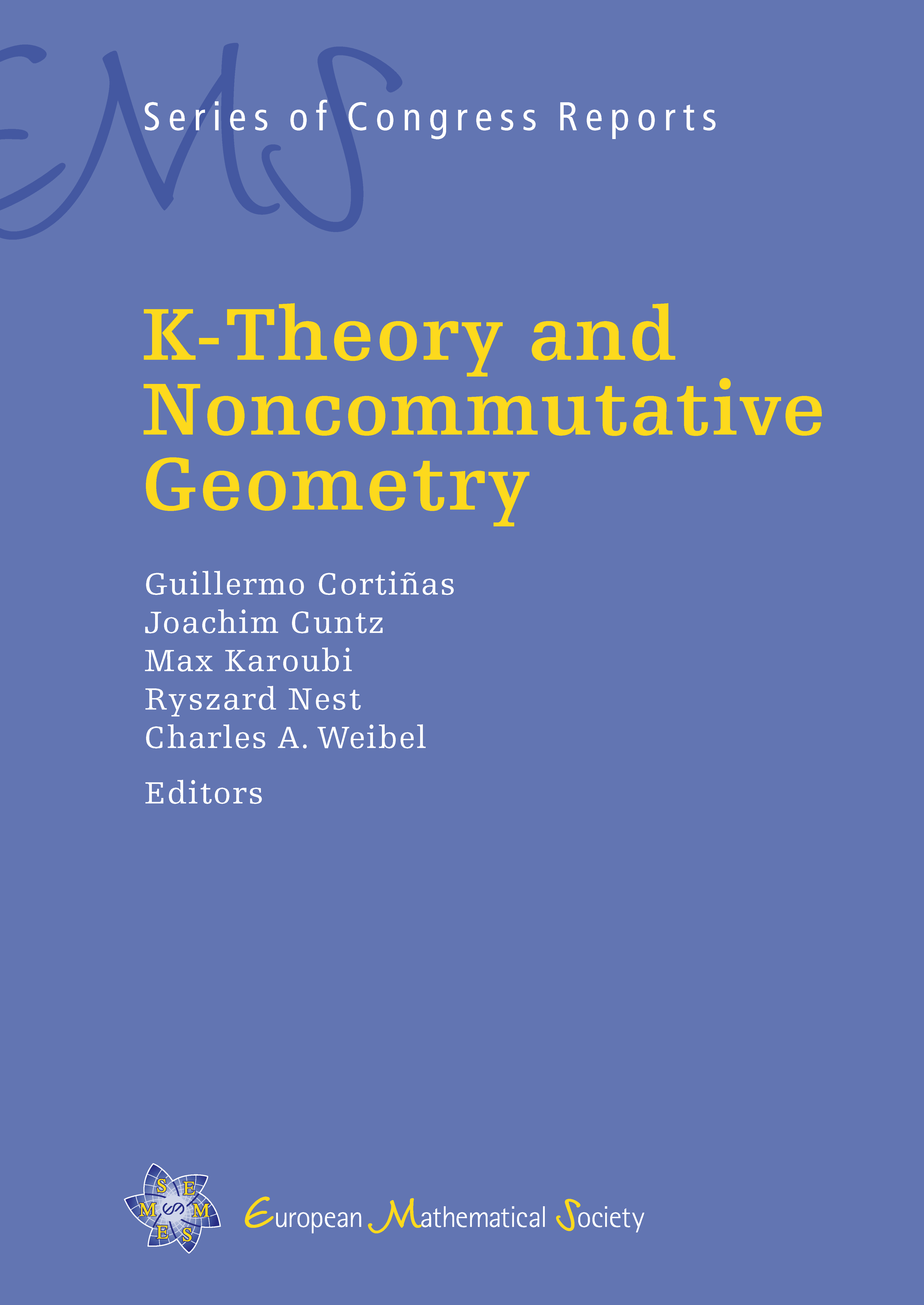K-Theory and Noncommutative Geometry
Editors
Guillermo Cortiñas
Universidad de Buenos Aires, ArgentinaJoachim Cuntz
University of Münster, GermanyMax Karoubi
Université Paris 7, FranceRyszard Nest
University of Copenhagen, DenmarkCharles A. Weibel
Rutgers University, USA

A subscription is required to access this book.
Since its inception 50 years ago, K-theory has been a tool for understanding a wide-ranging family of mathematical structures and their invariants: topological spaces, rings, algebraic varieties and operator algebras are the dominant examples. The invariants range from characteristic classes in cohomology, determinants of matrices, Chow groups of varieties, as well as traces and indices of elliptic operators. Thus K-theory is notable for its connections with other branches of mathematics.
Noncommutative geometry develops tools which allow one to think of noncommutative algebras in the same footing as commutative ones: as algebras of functions on (noncommutative) spaces. The algebras in question come from problems in various areas of mathematics and mathematical physics; typical examples include algebras of pseudodifferential operators, group algebras, and other algebras arising from quantum field theory.
To study noncommutative geometric problems one considers invariants of the relevant noncommutative algebras. These invariants include algebraic and topological K-theory, and also cyclic homology, discovered independently by Alain Connes and Boris Tsygan, which can be regarded both as a noncommutative version of de Rham cohomology and as an additive version of K-theory. There are primary and secondary Chern characters which pass from K-theory to cyclic homology. These characters are relevant both to noncommutative and commutative problems, and have applications ranging from index theorems to the detection of singularities of commutative algebraic varieties.
The contributions to this volume represent this range of connections between K-theory, noncommmutative geometry, and other branches of mathematics.